At the time of writing, Aston Villa are still vying for a UEFA Champions League qualification position, a result of their top-class performances in all phases of play throughout the 2023/24 campaign to date.
Aston Villa have achieved remarkable success this season with their coach, Unai Emery.
In addition to their advanced position, they have good offensive and defensive stats.
They boast the third-strongest attack in the league with 43 goals at the time of writing — trailing just Manchester City with 48 and Tottenham Hotspur with 44.
They also have the fourth-best defence, conceding 27 goals, after Liverpool with 18, Arsenal with 20, and Manchester City with 23.
This Aston Villa scout report will discuss an important aspect of Aston Villa’s success this season: their set pieces, especially the offensive ones.
They are the fifth-highest scorers from set-pieces in the league with seven goals, equal to Newcastle United.
Arsenal and Everton are in the lead with 11, while Tottenham occupy second place with nine, and Luton Town are in third place on eight.
What distinguishes Aston Villa is the difference in the design of the set pieces.
They do not always need to dominate the aerial duels to score goals or pose a threat from set pieces.
With time in the season, they are expected to score more and more of the set pieces designed by their set-piece specialist, Austin MacPhee.
MacPhee retained a position in the coaching staff at Aston Villa after Emery replaced Steven Gerrard as the club’s manager.
The former Hearts assistant boss initially moved to Villa Park in August 2021, as Dean Smith lured him from FC Midtjylland to be a specialist set-piece coach.
The Scot enjoyed one year in Denmark following his departure from Hearts in May 2020.
He has also worked for Cowdenbeath, St Mirren and the Northern Ireland national team before.
While MacPhee has split his efforts between Aston Villa and Scotland since September 2021.
Aston Villa Corners
This season, they have shown diversity in their use of attacking corners, but we will focus on the different ideas that they’ve utilised, moving from some of the simpler ones to the more complex ones.
The first photo below shows that they attack the short-corner area with three players while two players stand in the rebound zone; one is out of shot.
You can also see that the opponent defends with the man-marking defending system with only two zonal players, a player in the short-corner area and one behind him on the edge of the six-yard ready to join.
Another player, meanwhile, occupies the rebound zone.
In the second photo, the routine begins, so one of the rebound attackers runs behind the rebound defender to drag him inside the box and to fix the defender who comes from the edge of the six-yard to make sure that the second rebound attacker is free.
You can also note the importance of the overlap, which also forces the rebound defender to leave his area to help.
In the fourth photo, the second rebound attacker gets the ball while one of the zonal defenders tries to cut all of this distance to get the ball, so he is late.
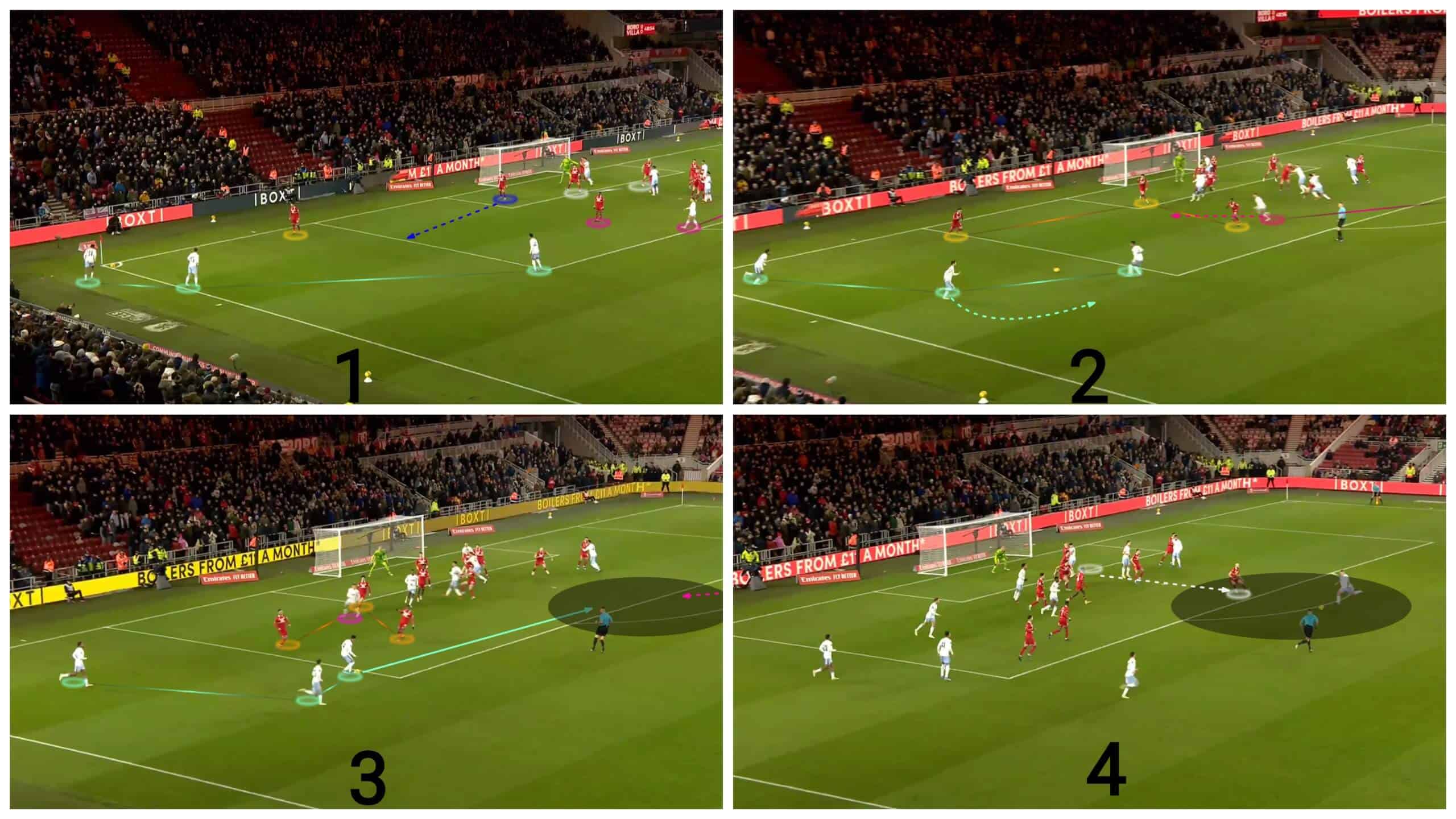
The plan works, but the goalkeeper saves.
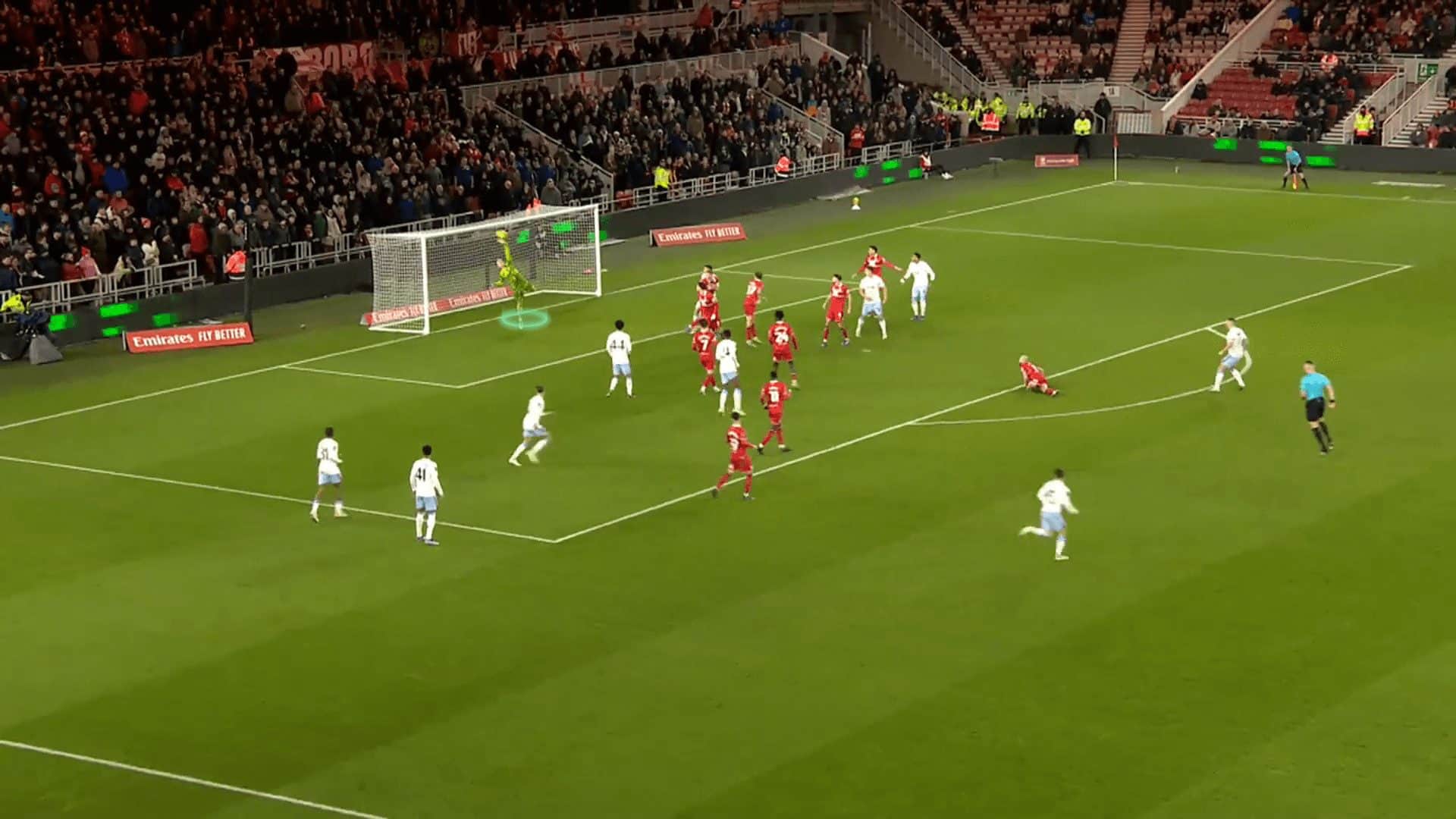
In the corner below after that one, the rebound defender decides not to go.
Hence, he is still in the rebound zone to protect it to prevent what happened at the previous corner, which is encouraged by the first rebound attacker who doesn’t move to fix him, so the second short-option player has the time and space to cross the ball.
In the first photo below, we should here refer to the importance of the position of the first-option attacker, who stands vertically inside the box to drag the short-option defender who has to run all of this distance to catch the second-short attacker who will cross the ball.
This first-option attacker also fixes the defender who comes to help from the edge of the six-yard, so he can’t go to help.
The first part of the plan is done now, so we need to explain the second part which is simply targeting the second-rebound attacker in the area after the far post.
He suddenly runs, exploiting that the first-rebound attacker fixes the rebound defender while all attackers inside the box run to the inside, dragging their markers to empty this area.
Still, the cross isn’t optimal.
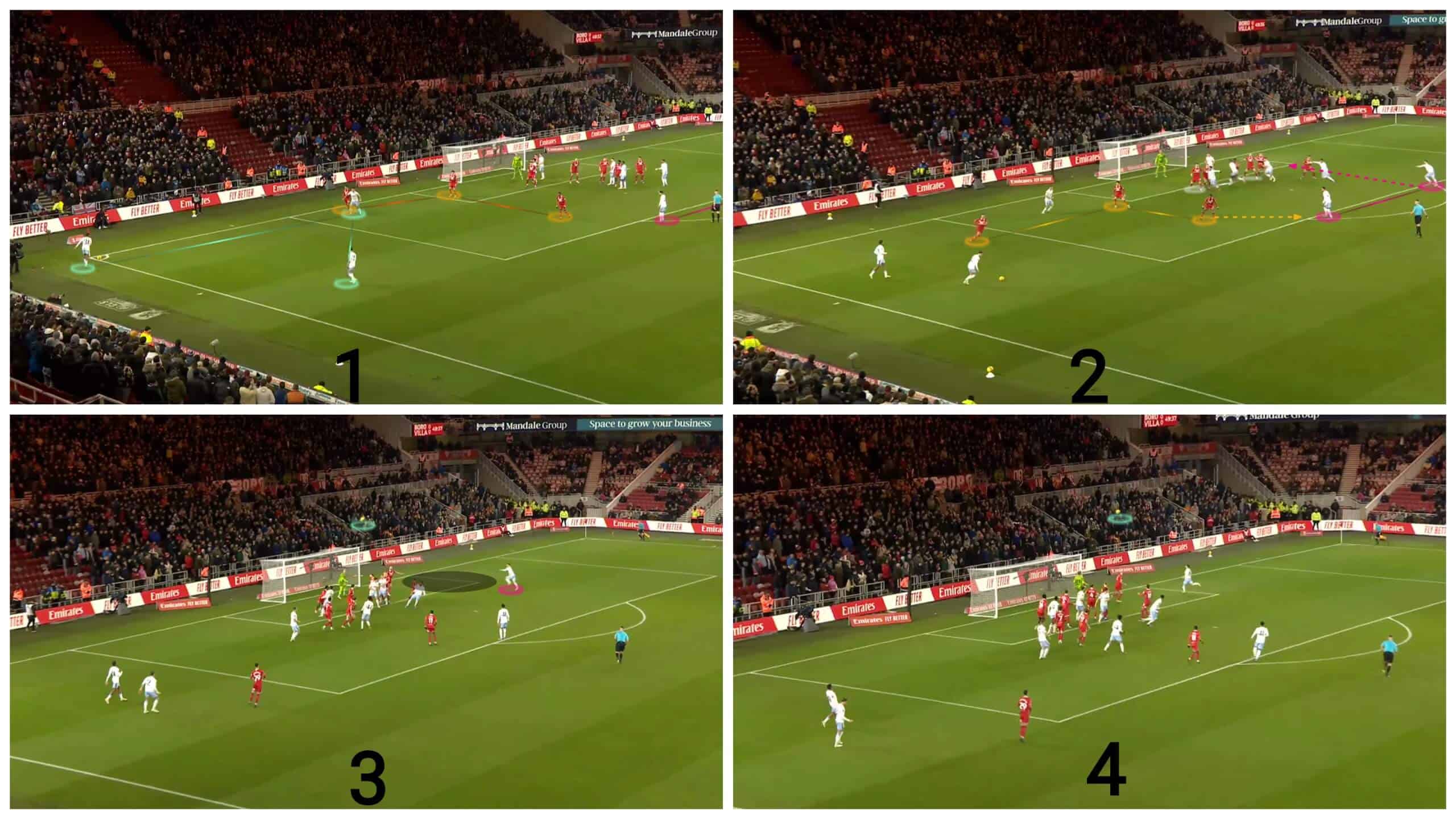
Their intent of attacking the rebound zone is a pattern, not a coincidence.
They can’t defend the short and rebound zones with five players leaving the box with only five, so they have to suffer from Aston Villa’s numerical superiority over them at first and the most clever thing they can do is ask certain players from the box to go to help in a certain time or to direct the attacking teams to certain directions by the defenders’ body shape, so they buy time to deal with that and defend the priorities at first, as Brentford did in the case below.
In the first photo below against Brentford, the Bees defend with four zonal players, four man-markers and two short-option players leaving the rebound zone at first, but after the pass, the second zonal defender runs to help while also cutting the passing lane to the rebound zone.
Aston Villa deal with that brilliantly in the second half with a simple idea to target the rebound attacker directly with a cross inside the box while all attackers drag their markers further inside, so one of the zonal defenders is forced to go, but he is late.
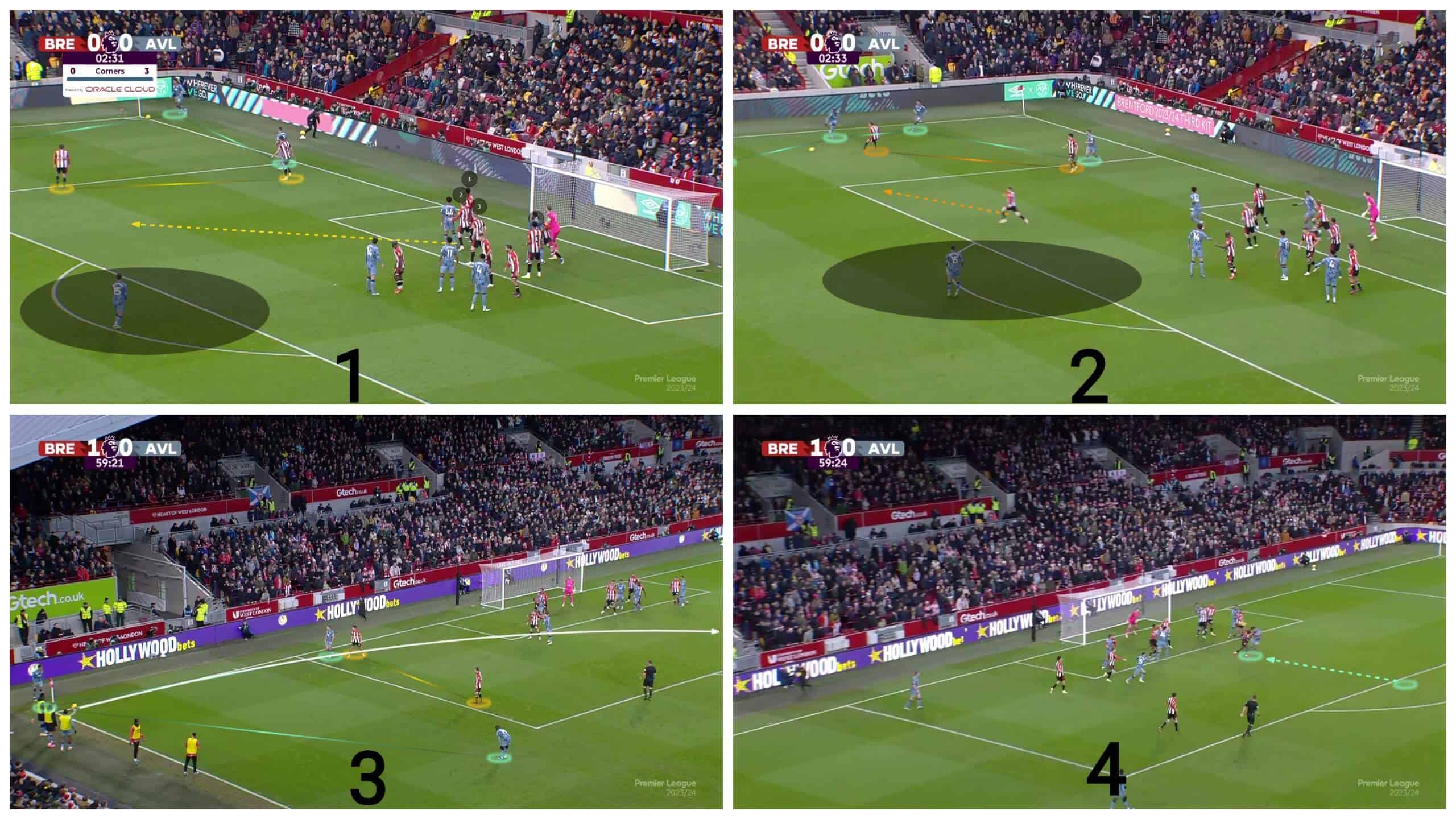
The plan works, but the headed shot goes near the post, shown below.
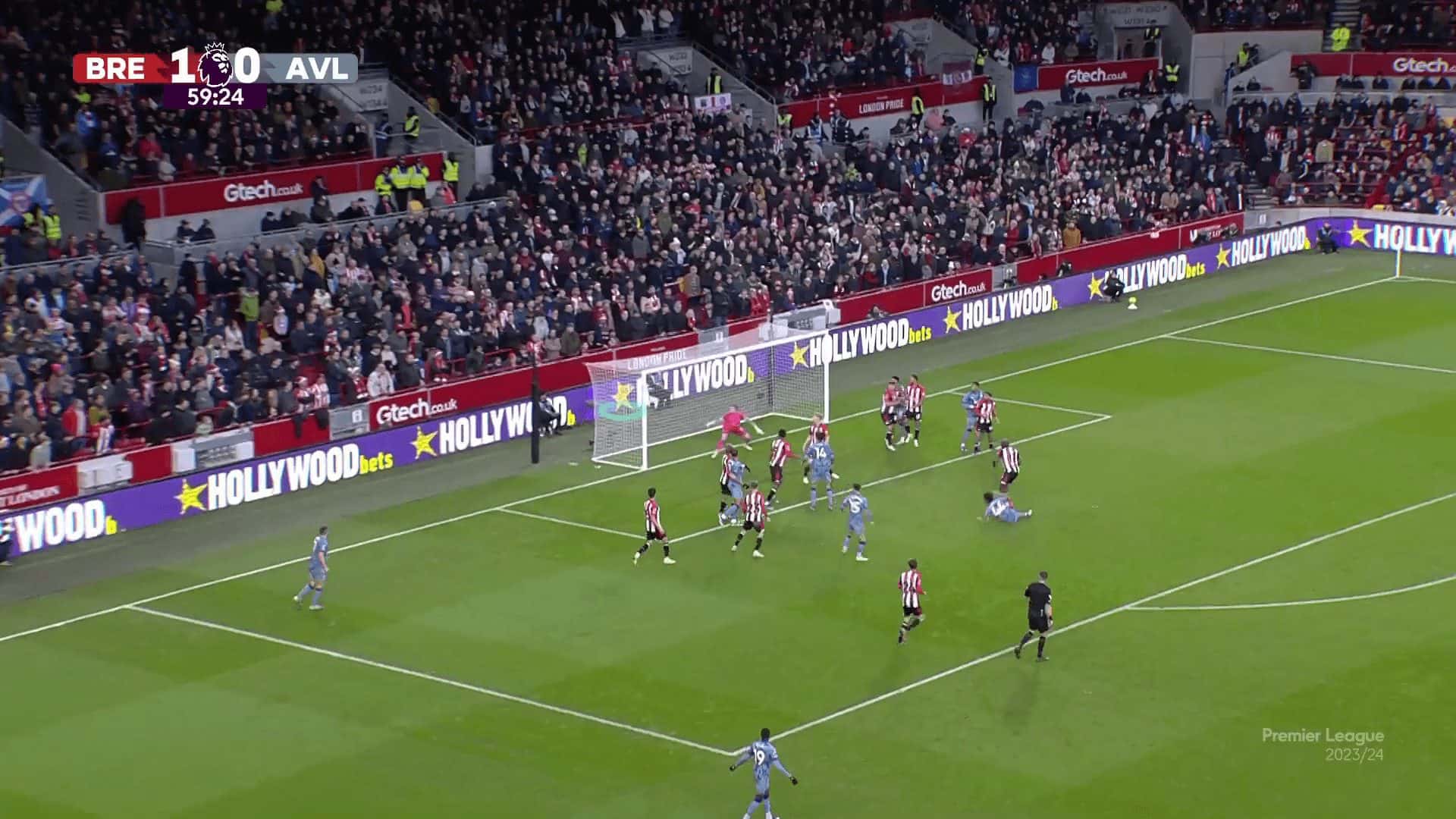
The Villans have many flexible ideas to deal with the opponents with many rotations between the short and rebound attackers, as in the case below where Everton use a similar idea with a zonal defender to help, only this time, they use the last zonal defender.
Aston Villa are ready, using two rebound players with one dragging the oncoming defender to empty the area for the second rebound attacker after some rotations and passes.
In the third and fourth photos, you can see the rotations between the four green players to give the targeted player the time and space against the two yellow defenders who are forced narrow by the short-option attacker and the first rebound defender who goes behind them.
In the fourth photo, the plan works, but the player who has the ball is offside.
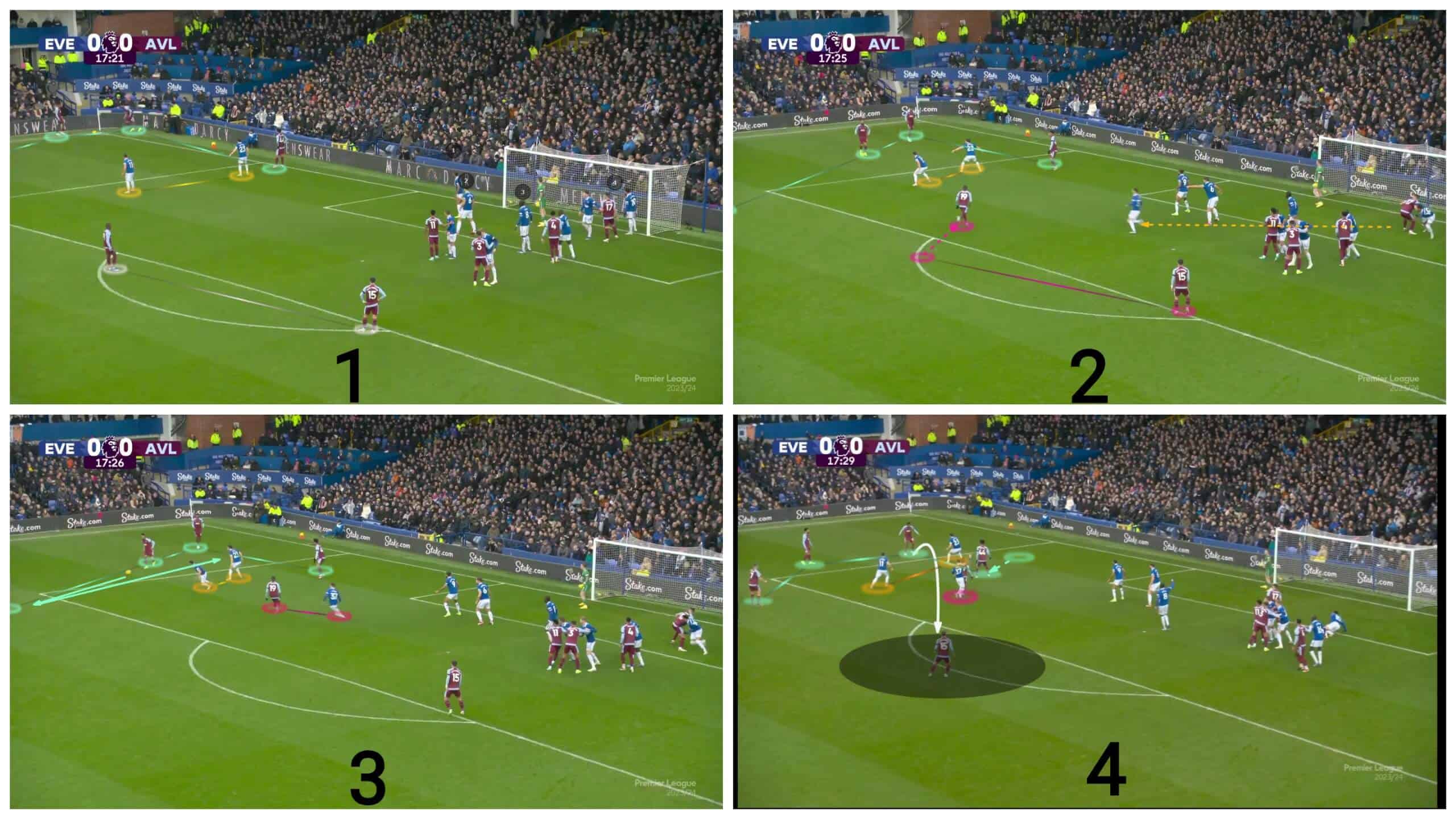
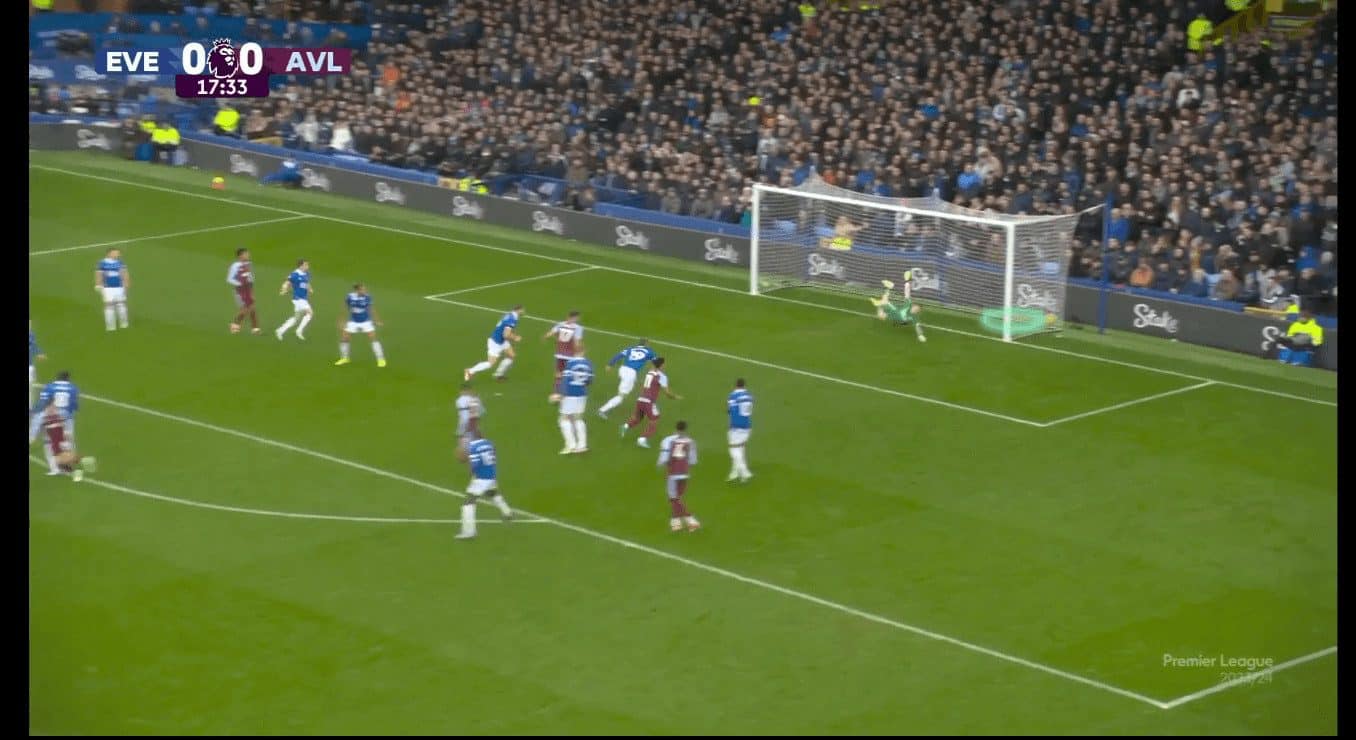
As we said, Villa are diverse, so in the second half, they use another idea by leaving the two rebound attackers in their positions.
They have a 4v2 situation to target the short-option player inside the box who exploits the overlap to stand in the passing lane between the two defenders.
He receives the ball and passes a cut-back pass to the rebound player.
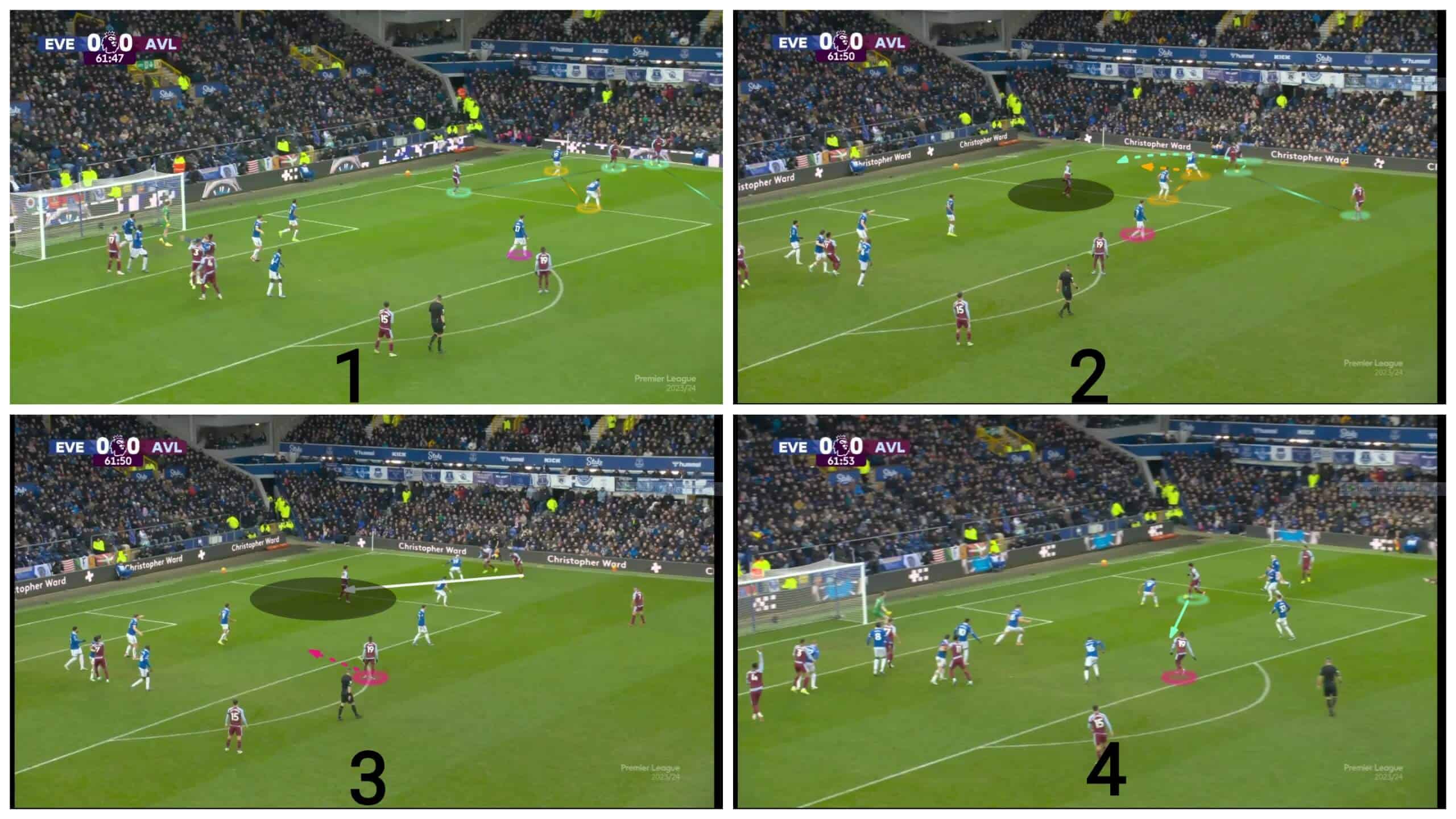
The plan works, but the ball hits the defender, going easily to the goalkeeper, as shown in the two photos below.
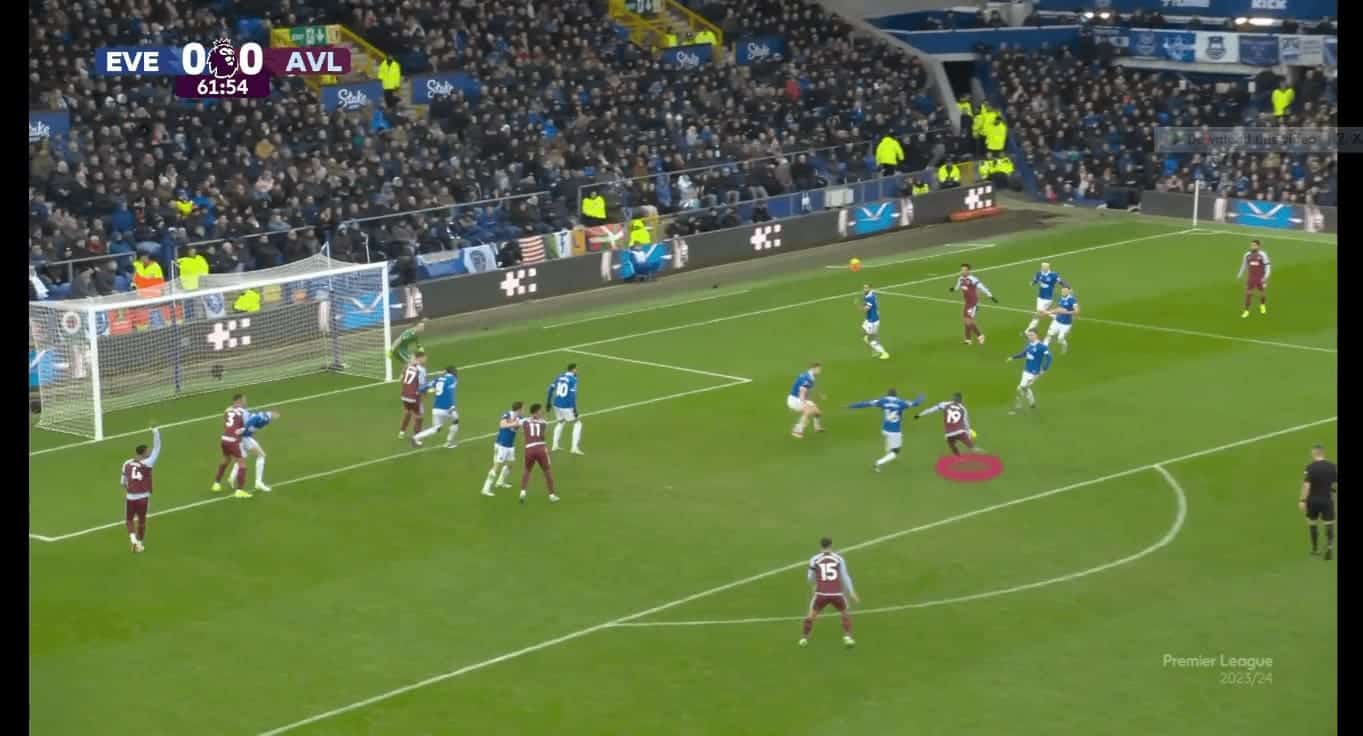
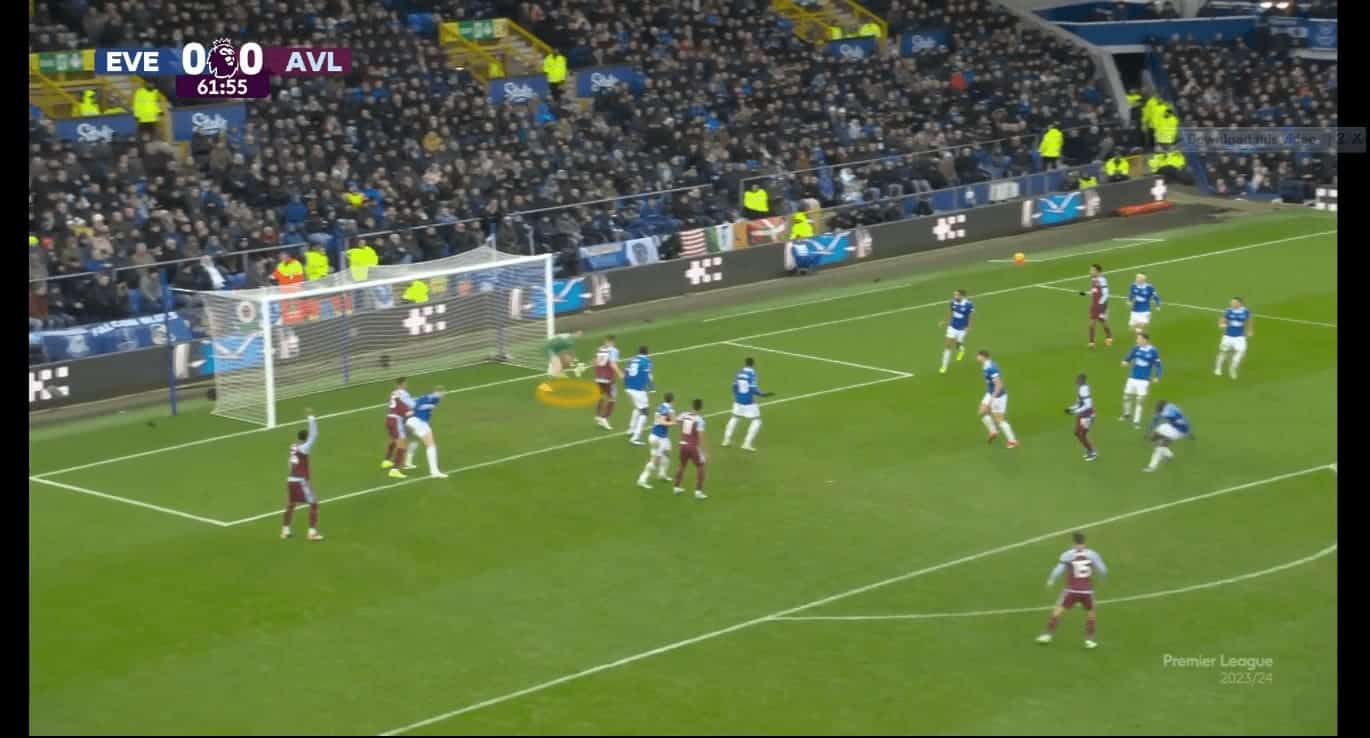
Free-kicks
Now, we come to their brilliant ideas for attacking free-kicks, so we start from the simplest case below.
In the first photo, you will find the last three defenders against three attackers in the black circle.
At the same time, the targeted player, in yellow, will run behind the fourth defender, highlighted by the green arrow, with the help of his offside teammate who will block this defender as shown in the second photo where the targeted player with the yellow arrow is free, and the block is highlighted in red.
In the third and fourth photos, our target is free, waiting for the cross in the area in front of him, but the cross comes behind him.
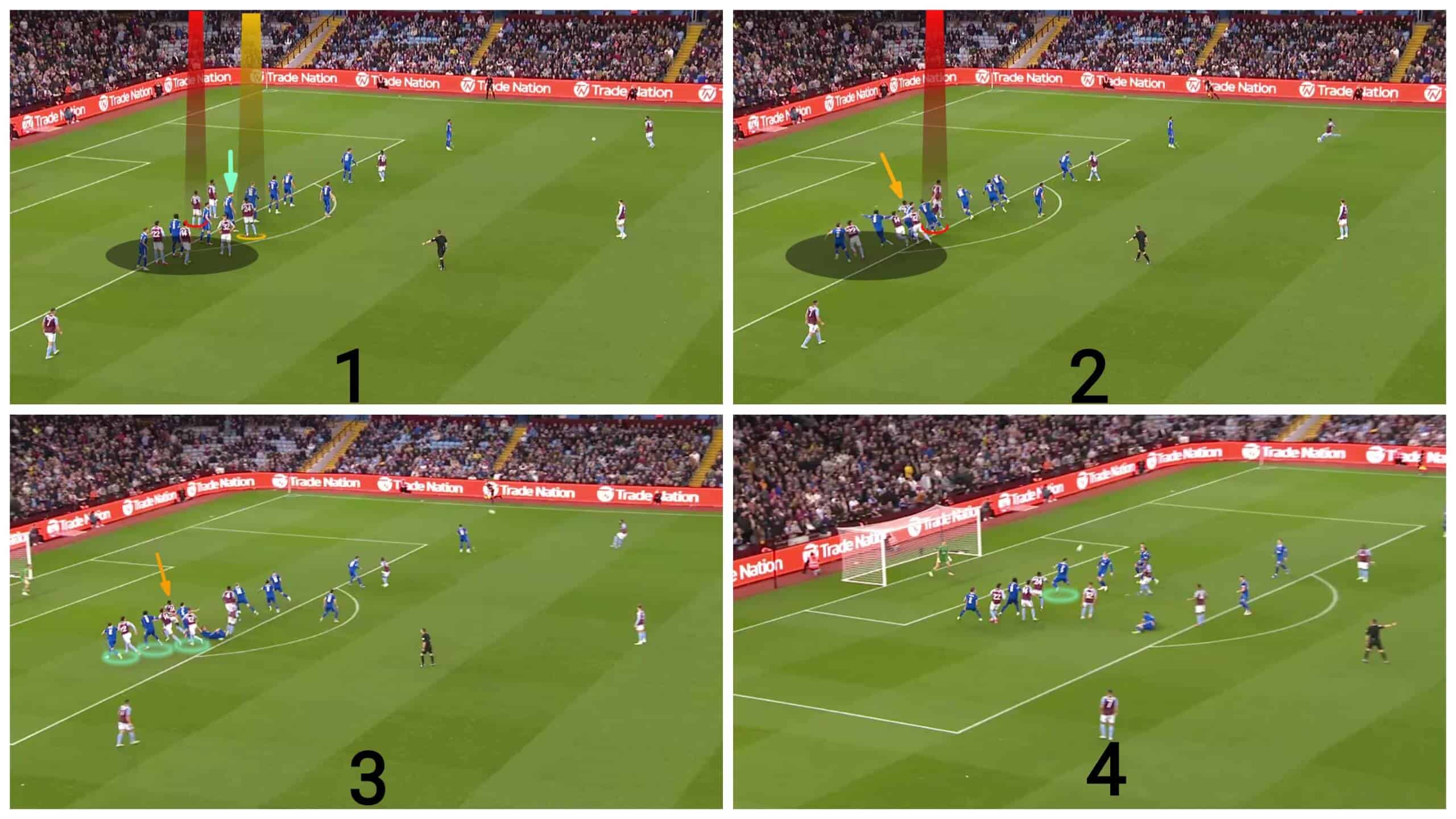
In the first photo below, we come to another idea, which is targeting the yellow player who stands late and surprisingly comes with momentum.
The two green blocks with the two offside players help them, while the red highlighted player stands in an offside position, hoping to be onside later and receive the pass.
Meanwhile, a teammate runs to the far post to frame the goal.
In the third photo, the cross is a little powerful, so he crosses the ball back to the green player who blocks at first, while the red and blue attackers frame the goal, but the defender gets the ball.
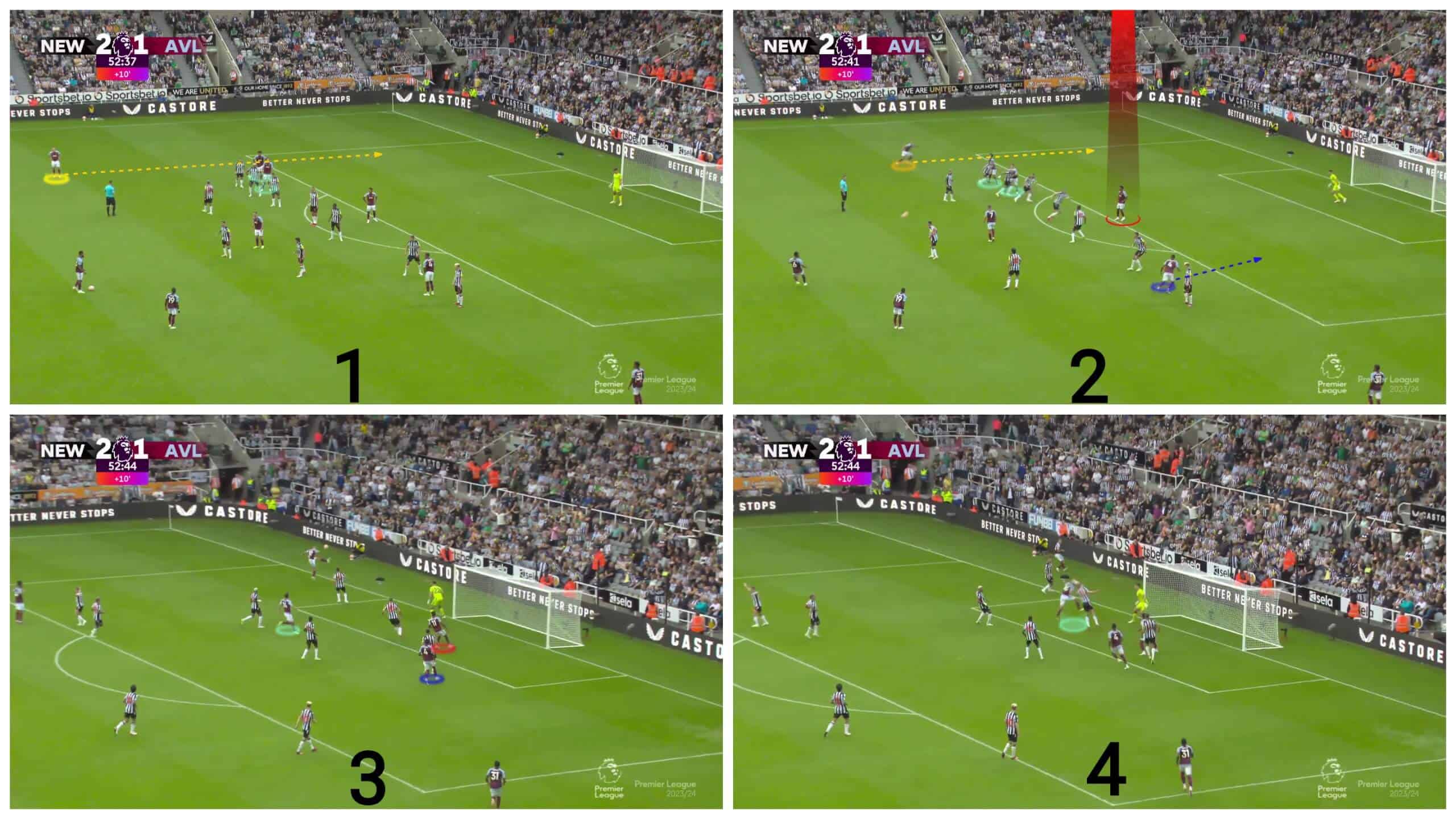
In the case below, they use a similar idea, but this time, the second part of the plan was different.
In the case below, a player stands widely to stretch the defending line, while a curved run is made to take the attention of the two defenders to empty the space behind him while the last attacker blocks the last defender, but the green defender is still in his position getting the ball away.
Going back to the first photo, a player leaves the line to drop back, dragging a defender from the middle while the attacker behind him drags a defender inside, shown in the second photo, so the offside attacker is ready to receive the pass alone when he becomes onside because the ball precedes him.
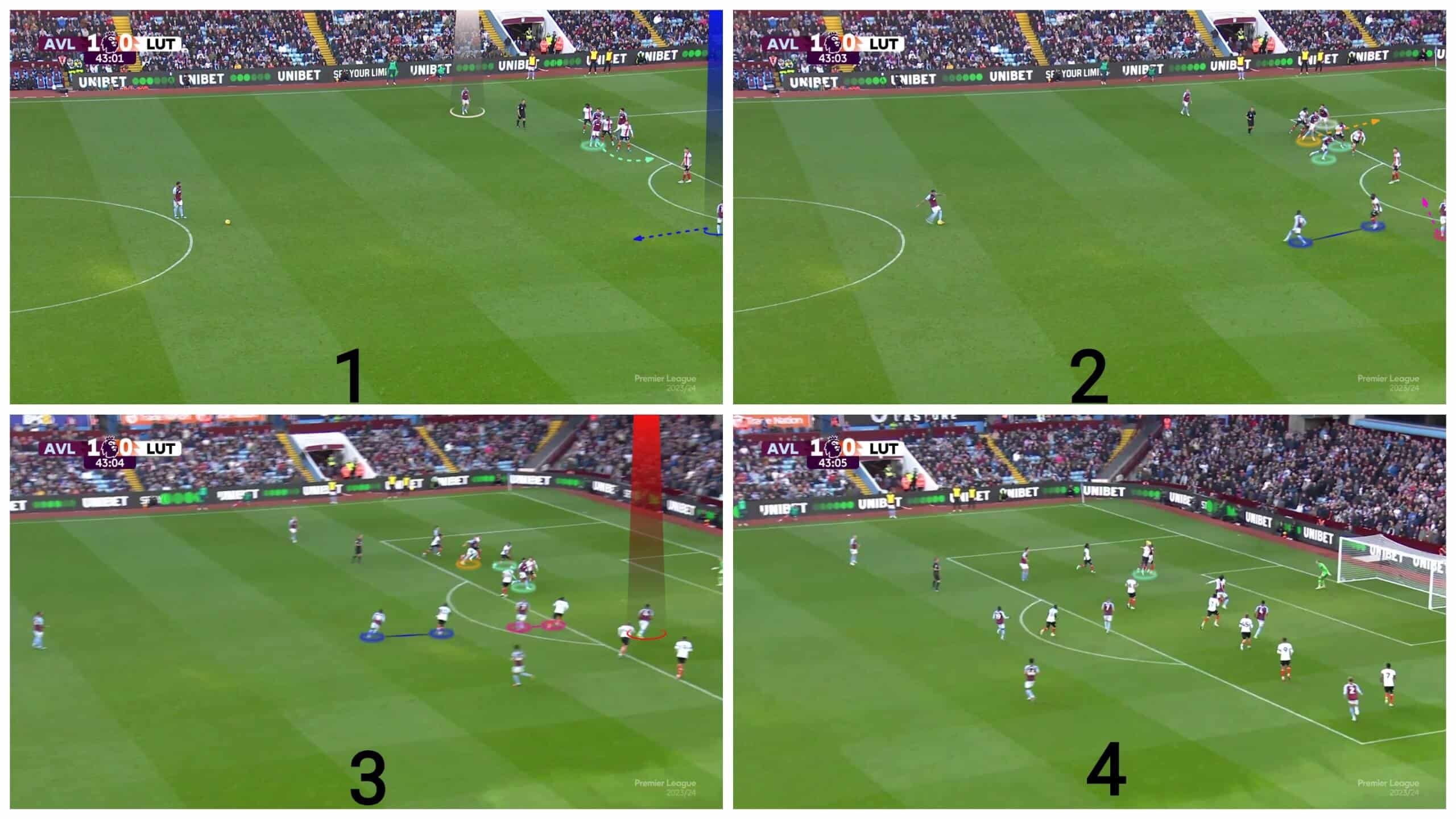
Coming to other ideas, we will go to the case below, where you can see three players stretching the line against this free-kick from the middle.
In the first photo below, the first targeted player goes to the cross while a player stands in the offside position to receive the ball from him.
The green player stands in the rebound zone to fix the rebound defender, preventing him from blocking our yellow-targeted player.
Our man runs between two defenders with the help of two blue blocks with two offside players; a block is shown in the second photo while the other is in the third photo.
In the fourth photo, the plan works while the offside player awaits the headed pass, but the goalkeeper brilliantly goes out to punch the ball.
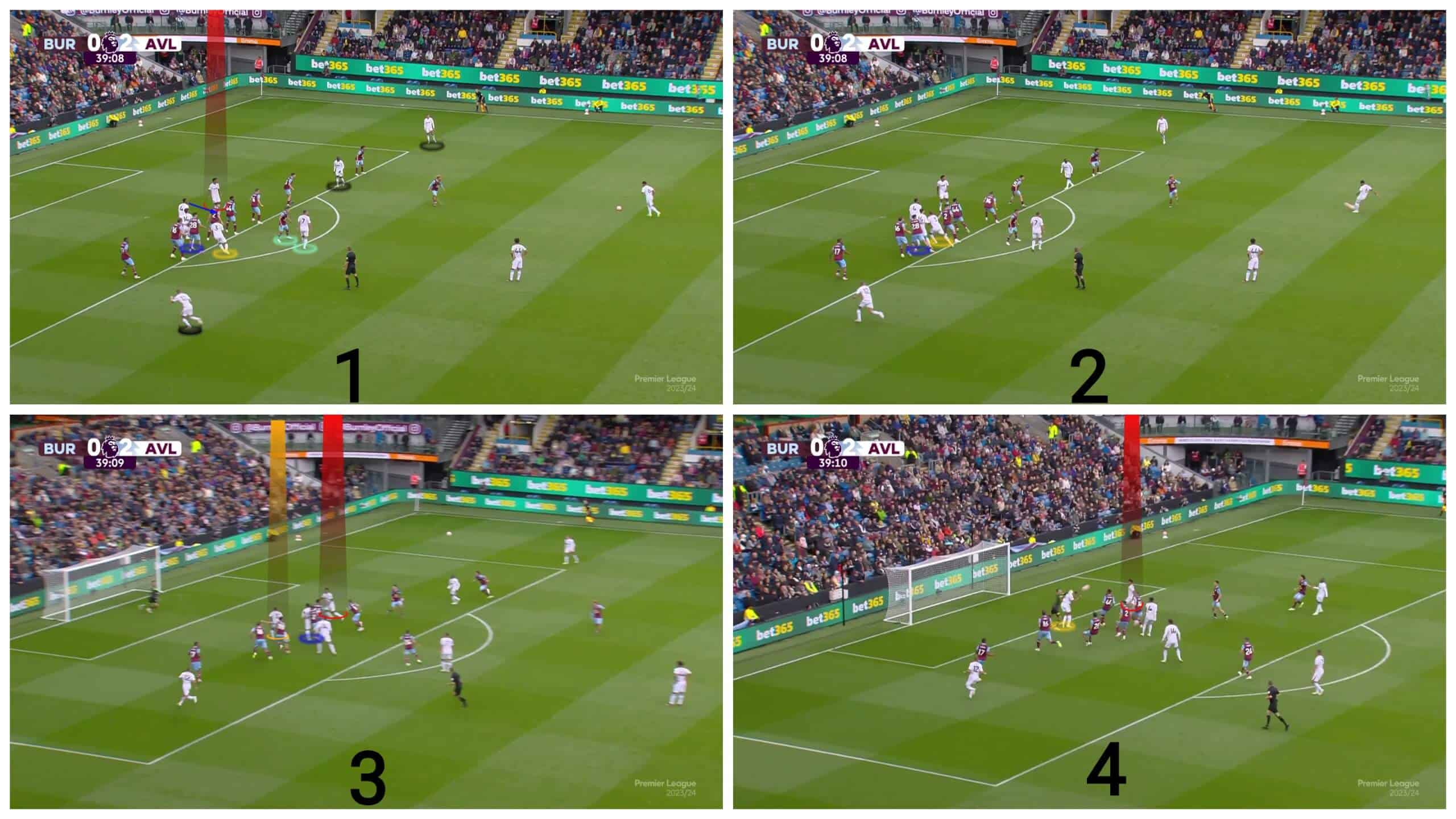
Against Manchester United, they scored a crucial goal from a free-kick.
In the first photo below, you see an attacker placed near the goalkeeper to distract him and also to force some defenders to drop back earlier.
He won’t participate in the play, going back to the rebound zone.
You can also see two players coming from distance with speed, forcing some players to drop earlier than the rest of the line to make the three numbered offside players onside later.
You can also see a player running in the middle while pushing a defender back.
In the second photo, all of that makes the three numbered offside players onside.
The first defender moves early because of the first blue player, while two defenders cover the offside because of the green attacker’s push, so the three players are onside now.
In the third photo, the plan is to target the first player.
In contrast, the other two block the defenders behind them and then go to frame the goal with the free another player coming from the back in case the ball passes the first player, as already happened in the fourth photo.
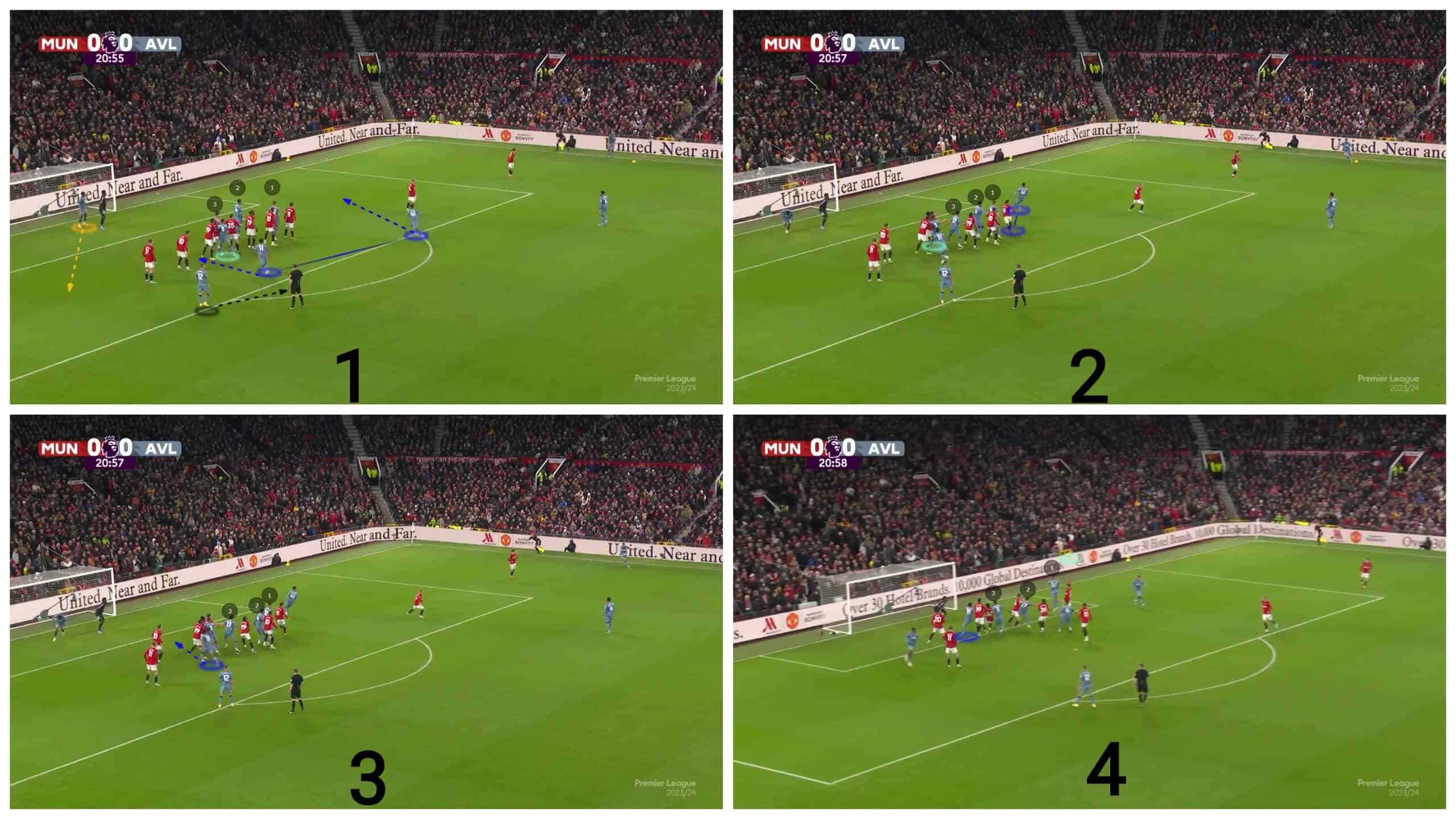
The cross passes the four players but distracts André Onana, so the result is a goal, as shown in the two following photos.
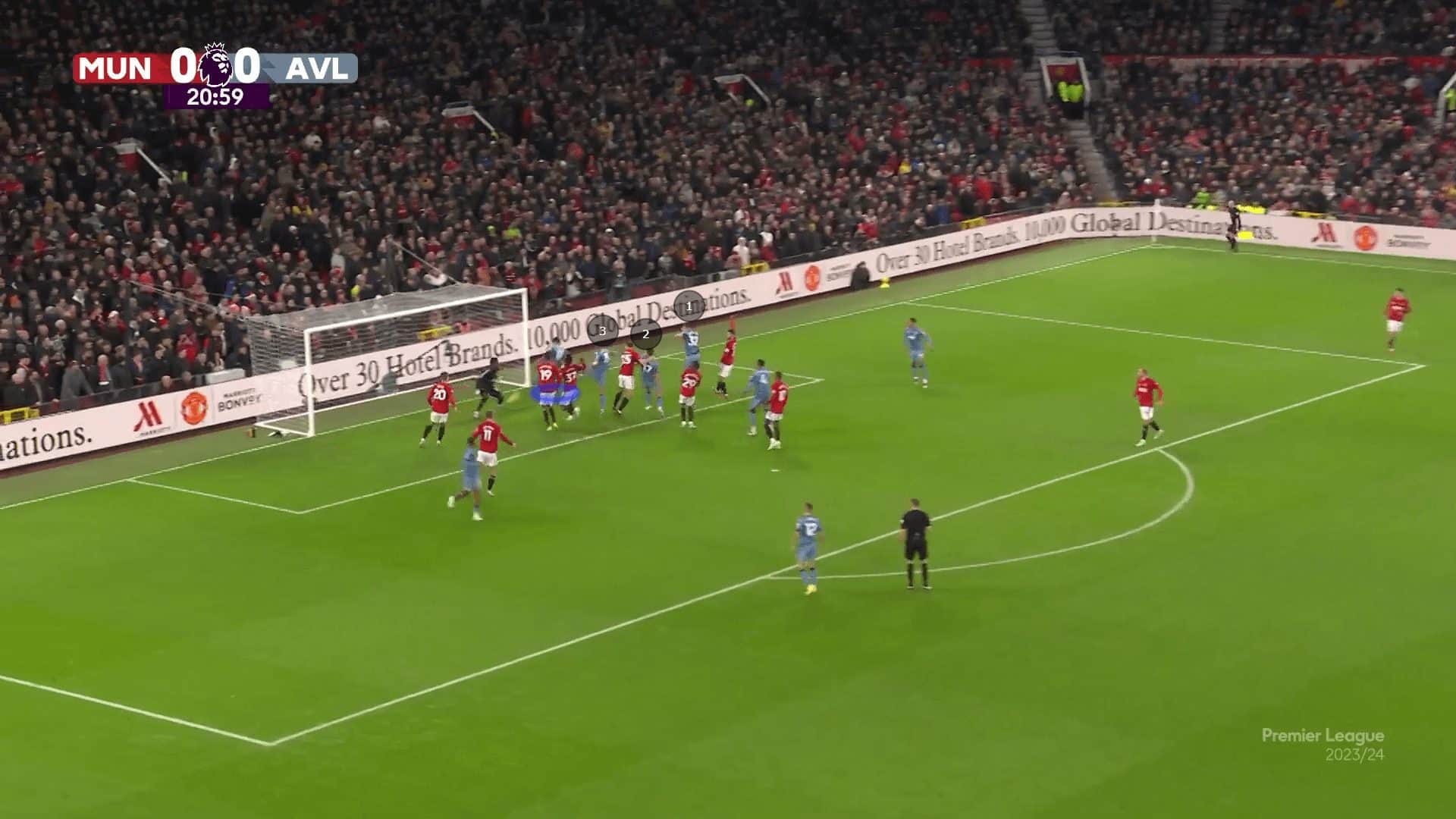
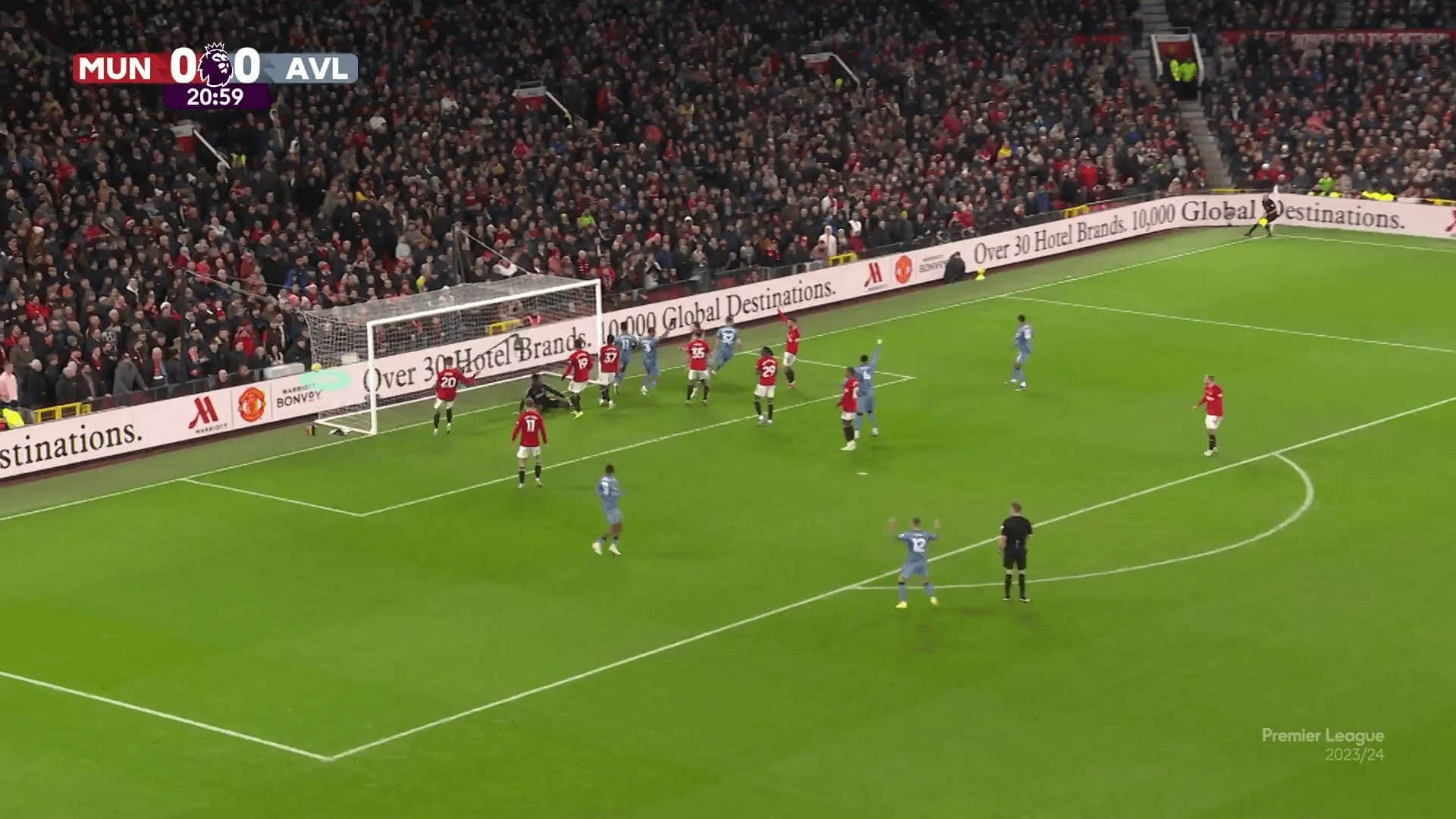
Conclusion
In this analysis, we have shown many tactics that Austin MacPhee has used with Aston Villa in their attacking set pieces, including corners and free-kicks.
In this set-piece analysis, we have explained how they are different and have a unique style of attacking set pieces by which they can score important goals in difficult matches and gain a competitive edge.






Comments